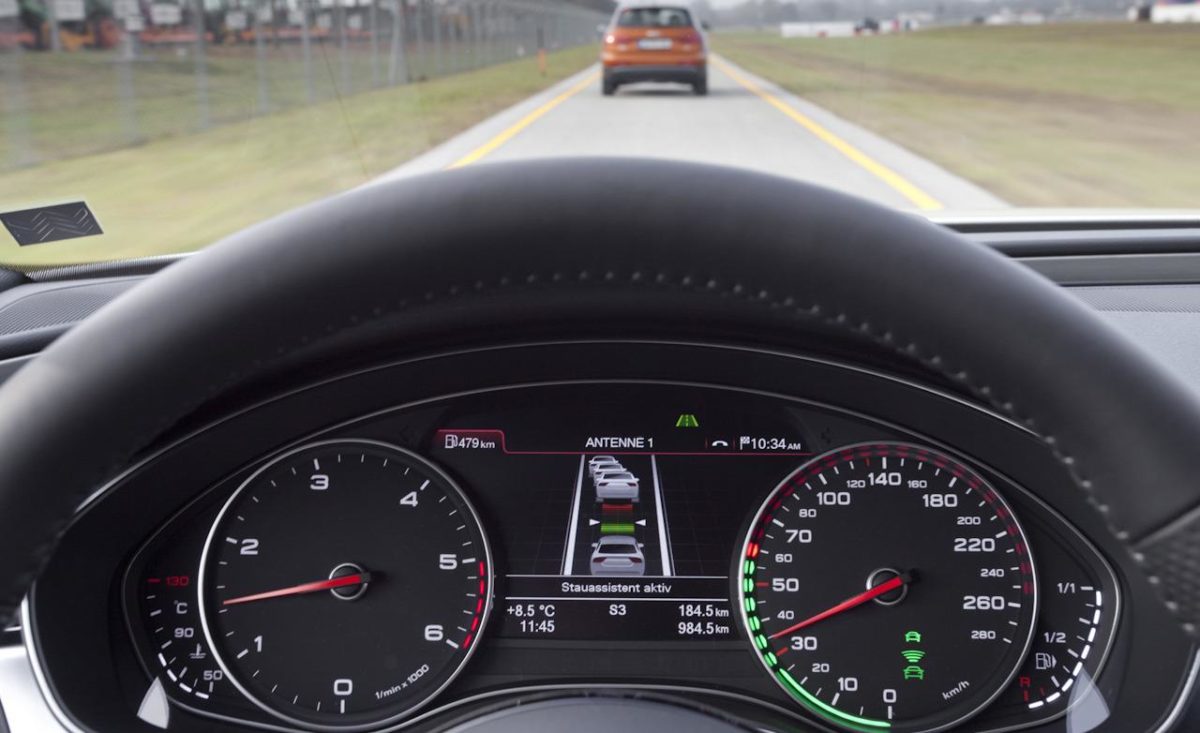Active cruise control systems: Road trip tech series #1

Long live the road trip! According to recent BCAA survey, a large majority of British Columbia motorists plan on taking a driving vacation this summer.
Despite the price of gas hovering above $1.35 per litre, more than half of B.C. drivers surveyed refused to let the high gas prices deter them from hitting the road this summer.
Fatigue on long drives, especially on straight highway stretches, can result in inadequate following distances and inattentiveness on the part of the driver. Conversely, unexpected abrupt traffic standstills are the most common causes of rear-end collisions.
While most drivers recognize the important of planning ahead, such as servicing a vehicle before a road trip, auto manufacturers have also been adding new technology to their vehicles to make driving on the highway easier and, more importantly, safer for everyone.
In this three-part series, I’ll be taking a closer look at three of the latest and most popular driver aid systems.
To start us off, let’s take a closer look at Adaptive Cruise Control (ACC) systems.
Initially launched in 1999 in the $120,000+ Mercedes-Benz S-Class flagship luxury sedan, ACC is an advanced cruise control system that typically uses a laser or radar sensor setup to monitor traffic ahead.
Over 16 years since its debut, the price of this safety and convenience feature has come down dramatically and the technology is no longer limited to just luxury vehicles.
The technology behind it
ACC measures distance as a function of speed and can monitor the traffic ahead while ignoring stationary objects such as road signs and telephone poles. The system slows down or speeds your car up automatically to keep pace with the car in front of you at a set distance and maximum speed. More sophisticated systems can even apply the brakes to slow the car down to a dead stop.
ACC can also determine how fast the vehicle is approaching the vehicle ahead. For example, when approaching a lead vehicle at a high rate of speed, the system will activate sooner than when approaching slower.
Two types of systems available:
A “full range” system uses long-range radar/laser to see vehicles up to 600 feet ahead, which is equivalent to about six to seven seconds of lead time at highway speeds. This system also uses short-range radar/laser for a closer distances out to about 100 feet, or one second of lead time.
A second less expensive type of system is called “partial ACC,” and only works at up to 600 feet ahead.
As it uses both short and long range sensors, full range systems can also follow cars at low speeds during bumper-to-bumper traffic, helping the driver to creep forward without significant intervention of the throttle or brake pedals.

In contrast, partial systems can only operate at highway speeds and don’t necessarily have the ability to apply full braking power.
A few examples:
Infiniti’s Intelligent Cruise Control system is an example of a full range system that uses laser-based sensors located in the front bumper to detect and control vehicle speed up to 145 km/hr.
Infiniti’s system can not only maintain a set distance to the vehicle in front, but also intervene to prevent a collision even if it means applying full braking effort to bring the car to a complete stop. The system is sophisticated enough to see not just one car ahead, but the car in front of that car too.
BMW boasts that their full range system uses high-performance radar sensors that are heated in cold weather, ensuring year-round operation. On curves, BMW’s Active Cruise Control even uses data from the Dynamic Stability Control and navigation systems to calculate whether the cruise speed needs to be adjusted, and to determine whether vehicles in the radar’s field are in the same or a neighbouring lane!
Mazda’s Radar Cruise Control, in contrast, is a partial ACC system that uses millimetre wave radar to detect the relative speed and distance to the car ahead. It then automatically adjusts and maintains a safe following distance from the car in front.
Like Infiniti’s system, it is designed to relieve some of the burden of the driver on long drives and on highways. However because it is a less sophisticated partial ACC system, it does not have the stop-and-go traffic creep feature that the Infiniti’s full range system offers, nor can it apply 100% braking effort.
Still no substitute for driver attention
While these systems are designed to reduce the risk of accidents by maintaining a safe following distance from the car in front, the systems have their limitations.
In poor weather conditions, snow can obstruct the laser sensors leaving them “blind.” Laser-based systems are typically also affected by other inclement weather conditions such as heavy rain and fog. Because radar-based systems use radio waves (rather than light), they’re more forgiving in poor weather conditions.
No safety system or combination of such systems can prevent all accidents, and it’s important to note that while useful as driver aids, these systems are not a replacement for safe and attentive driving.
Regardless, if you do a lot of highway miles or long trips where your reflexes are dulled from long consecutive hours of driving, or if your commute involves rush hour traffic, you may want to consider a car with ACC for your next vehicle!

